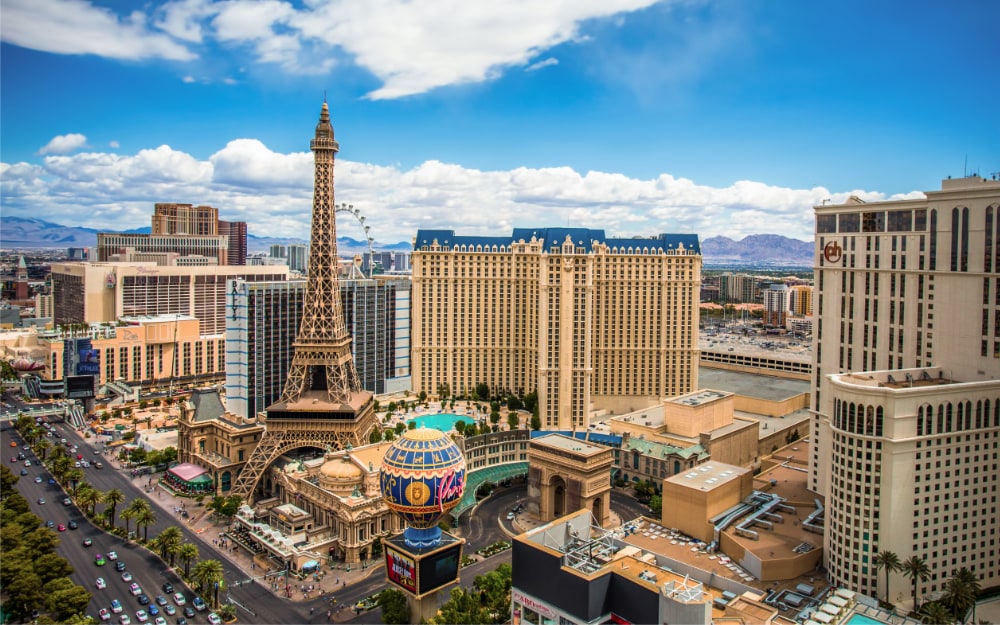Population in Urban Area, now
- World: 185th
- North America: 25th
- United States: 19th
Las Vegas Urban Area Population Graph
Las Vegas Population Review
The glittering lights of famous Las Vegas are deep in the desert of Nevada, USA. This internationally renowned gambling and partying destination has long been known as Sin City for its debaucherous adult delights, which included gambling, adult venues, prostitution, and the wide availability of alcohol. Las Vegas is the most populous city in Nevada with 2.7 million people in the Las Vegas Valley metropolitan area. Within the city itself, there are some 650,000 residents.
Las Vegas is a young city. Founded in 1905, the population has boomed in a relatively short amount of time. By 2005, Las Vegas’ population had ballooned to 1.5 million residents. In ten more years, the population had jumped again to 2.2 million, and from there it’s only expected to keep rising. Predictions show that the population of the Las Vegas Valley metropolitan area will reach 3.3 million people by 2035.
The Entertainment Capital of the World
Tourists and visitors come from wide and far to visit the city, with many considering a visit to the city a “bucket list” item. In 2017, there were 39 million tourists that visited Las Vegas, which amounts to over 100,000 people arriving every day, with the lightest month for tourism being December. Out of these people, 47% listed that they were coming for “vacation or pleasure”, 12% came strictly to gamble, and 11% came to visit friends or family.
The Las Vegas tunnel people
There is a rarely heard of faction of Las Vegas’ population that lives beneath the streets of the city. A labyrinth of flood tunnels beneath the glittering city is where some 1,000 people call home, eking out an existence. Many people living in the tunnels were forced there by bankruptcy, drug addictions, and evictions. The maze of tunnels has become home to a kind of community, with a graffiti-filled “art gallery”, and even children living in the tunnels. But this is not to say the flood tunnels are a safe or comfortable home. Several documentaries have even been made about the tunnel people.
While not everyone is there to gamble, almost everyone does
Las Vegas’ is not just the city for partiers and gamblers anymore. The city has started to change its identity to attract more families and senior citizens, and it is also a popular location for conventions. 41% of the people who visit Las Vegas will attend a Broadway-style show and 26% attend a show by a big name headliner. But even if only 15% of visitors to the city come specifically to gamble, statistics show that 71% will gamble during their time in the city. They will spend about 2.9 hours per day gambling, and their gambling budget is around $575. 60% of these people will visit between five and ten different casinos and 88% of people who gambled do so on the Strip. With somewhere close to 200,000 slot machines in the city, it’s hard not to gamble during a visit there.
Racial makeup
Much of Las Vegas’ population is made up of non-Hispanic whites and Hispanic whites. 62% of the population identifies this way, with black or African American people making up 11% of the population and the rest of the populace split between Asian, mixed race, and Native American. In 1990, 72% of the population was made up of non-Hispanic whites. That has since declined to 47% of the population in 2010, even as other ethnicities have increased within the population. Interestingly, Las Vegas has also been shown to have the second lowest level of black-white segregation of any of the 100 largest metropolitan areas in the United States, after Tucson, Arizona.
